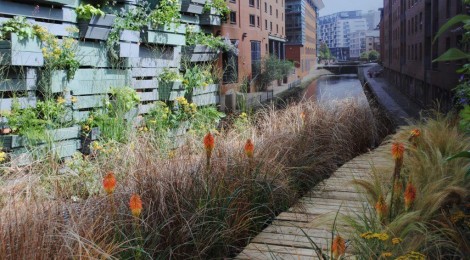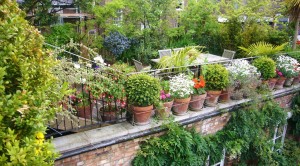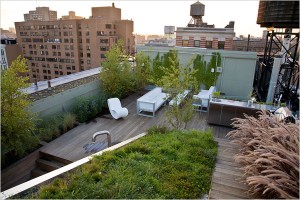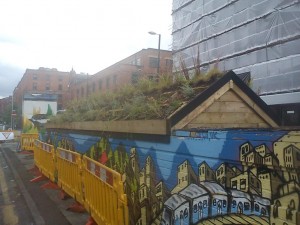
roof gardens and green space in urban environments
It’s common knowledge that trees and plants benefit our environment in terms of CO2 emissions but they can also provide added benefits to built up areas that could improve future urban planning. Roof gardens are a brilliant way to make an urban environment more environmentally friendly and let’s face it a lot more visually appealing. The advantages of a little greenery are vast and have an effect on everything from the cost of energy bills all the way to improving mental health. A number of materials used in green roofs can come from recycled sources, such as membranes and growing mediums so creating a rooftop oasis can be a great way of up cycling and make the project a bit less costly.
(picture courtesy of:http://benlannoy.com/roof-gardens-from-london-to-hampshire/)
Roof gardens create good roof insulation and can dramatically reduce the loss of heat from a roof keeping it cool in summer and providing insulation in winter. Studies by Nottingham Trent university show that with a main daily temperature of 18.4C the temperature beneath the membrane of a normal roof was 32C compared to a green roof that was only 17.1C. When the mean daily temperature was 0C the temperature below the membrane of a standard roof was 0.2C compared to a green roof that was 4.7C. Buildings without green roofs could suffer from increased air conditioning in summer and heating in the winter which will further increase the fuel bills making roof gardens a long term way to save some cash.
 (picture courtesy of:http://roofgardentips.com/roof-gardens-are-important-to-make-green-environment.html)
(picture courtesy of:http://roofgardentips.com/roof-gardens-are-important-to-make-green-environment.html)
One of the more well-known benefits of Green roofs is that they can provide a huge benefit to a cities biodiversity by providing a home for local wildlife that would have been lost during development of the area. Another option focused on biodiversity increase is a brown roof this is the same as a green roof but needs to be designed to meet specific local biodiversity conservation objectives, so in other terms the garden has to be designed and planted to maximise diversity or even designed specifically for wildlife in the local area.
With larger numbers of urbanites suffering from stress, improvements in public health are needed. There has been recent research by Exeter University providing evidence that green space in urban environments can lead to long lasting improvements in mental health. There has also been research showing that access to green space can bring about direct reduction in a person’s heart rate and blood pressure. Factors like this can be especially important to companies who could further benefit by a reduction in the levels of staff sickness.
Urban heat island effect can be a major problem in developed areas and in large cities the temperature difference between them and the rural areas can be as large as 5C. Building roof gardens can reduce the amount of hard surfaces in a city and increase the absorption of heat bringing the temperatures in the city down and reducing the effects of smog and airborne particles in the atmosphere.
Overall roof gardens are an aesthetically appealing way to tackle some of the urban environments major problems on a communal and personal level. The positive effect of green space doesn’t just counteract processes like urban heat island but can also lower the cost of living for inhabitants making it a great addition to any city heading towards sustainable development.

